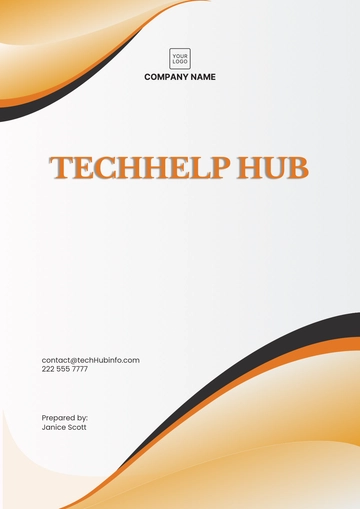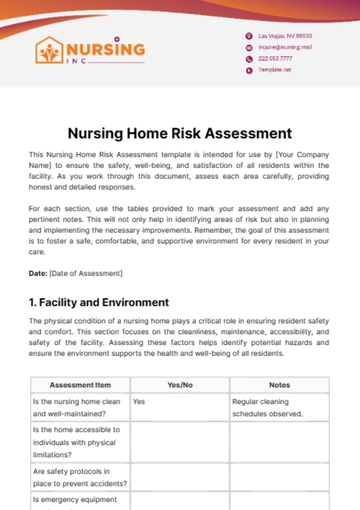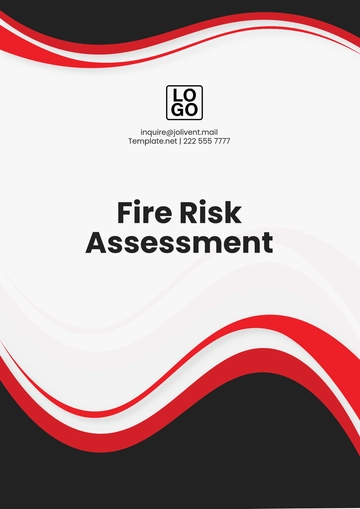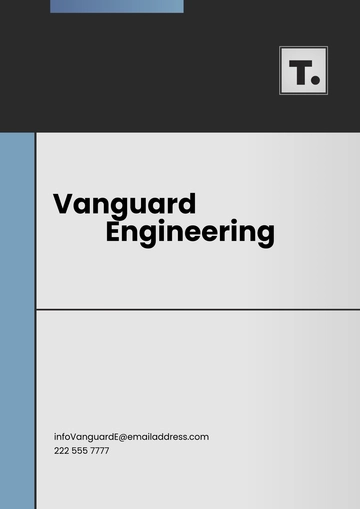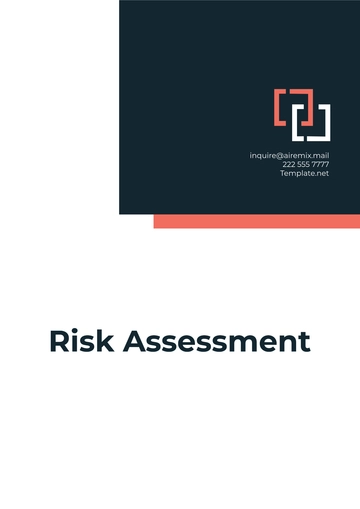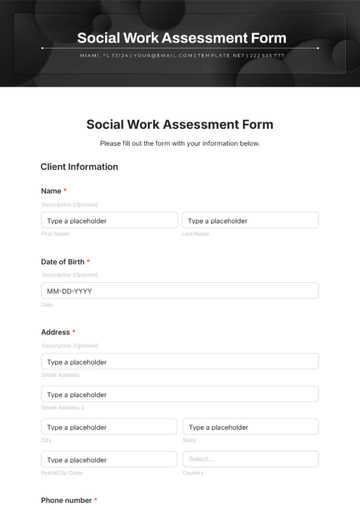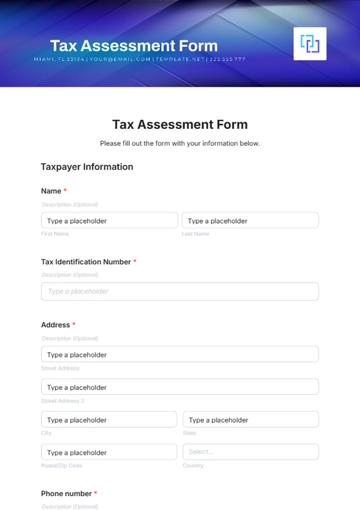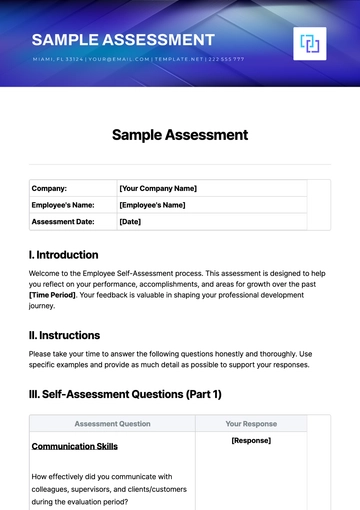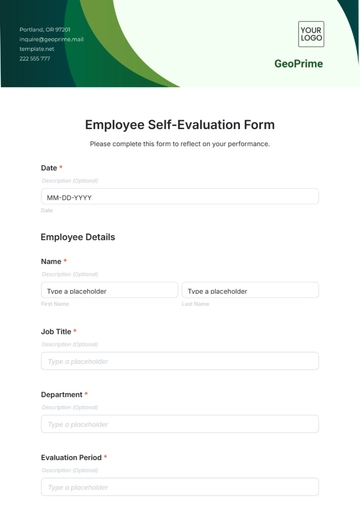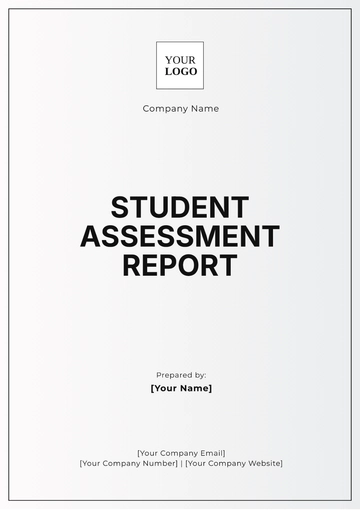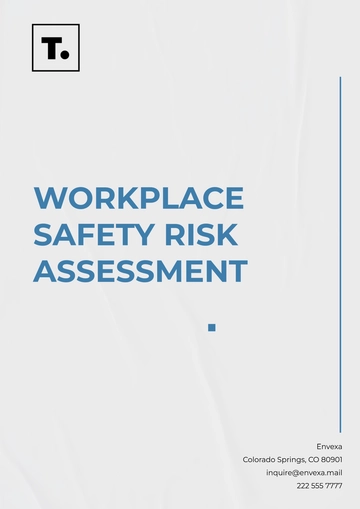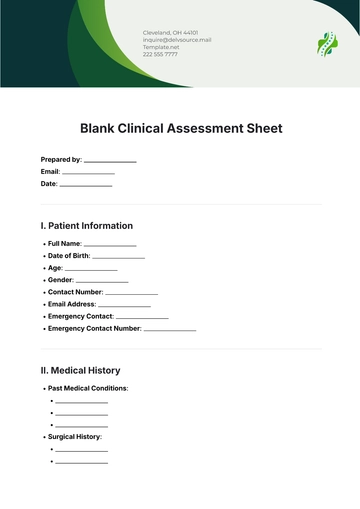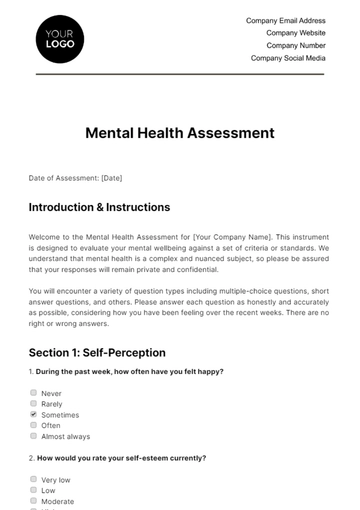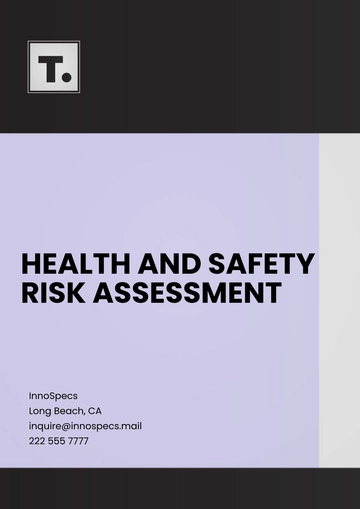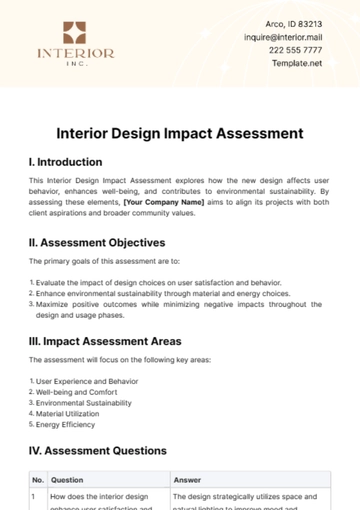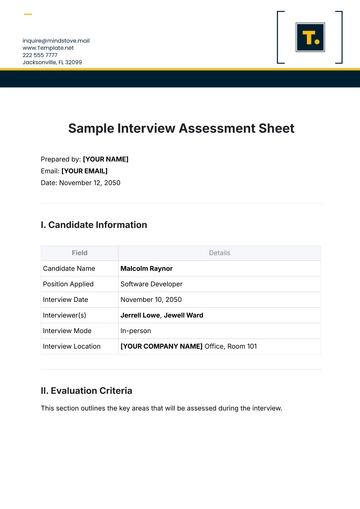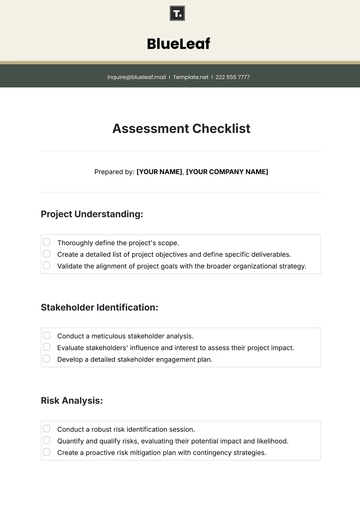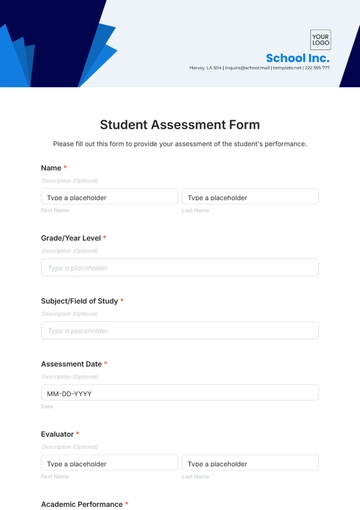Free Administration Detailed Risk Assessment Report
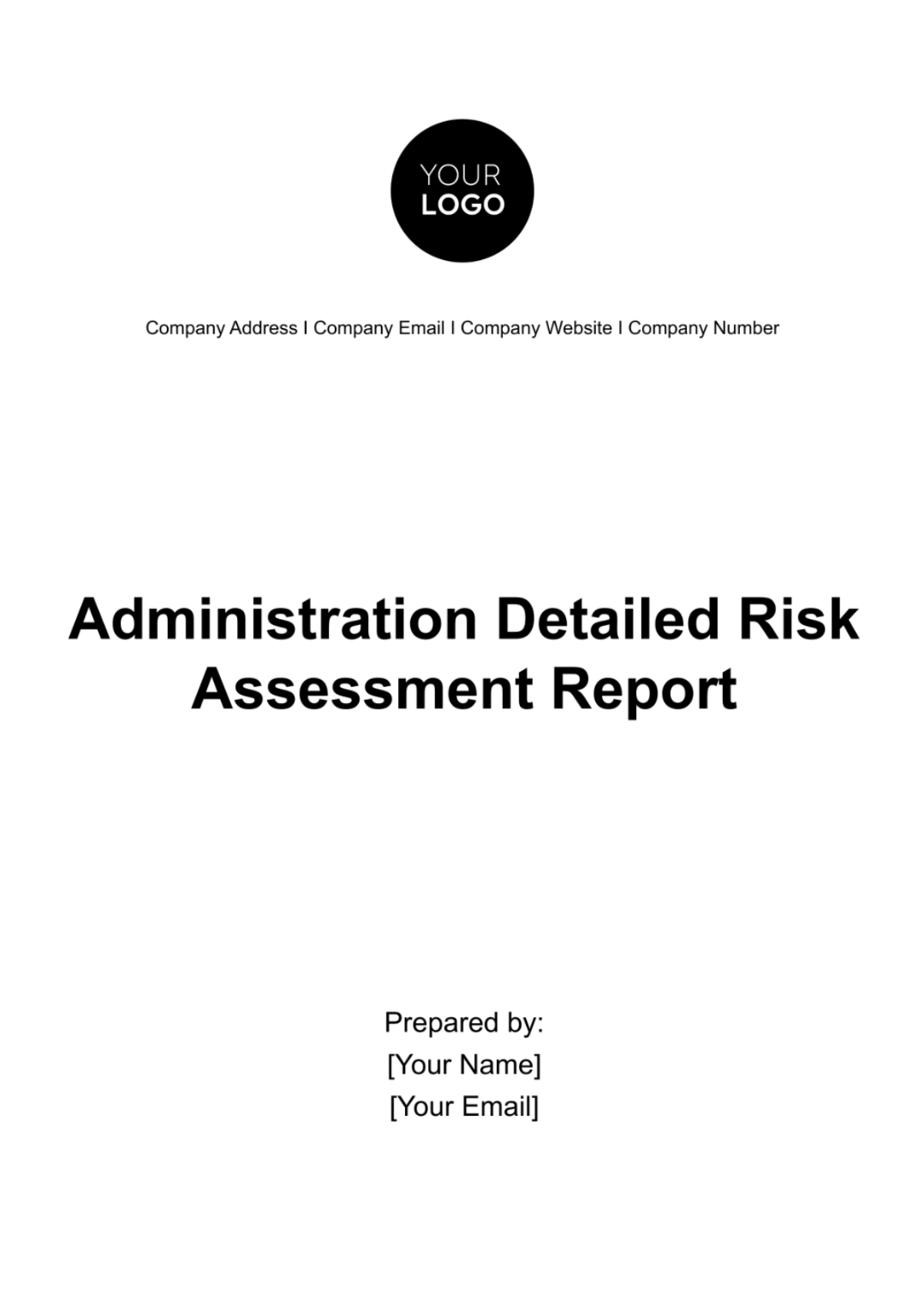
I. Executive Summary
The Administration Detailed Risk Assessment Report presents an exhaustive examination of [Your Company Name]'s administrative landscape, aiming to identify and mitigate potential risks that may impede operational efficiency and threaten organizational objectives. Key findings include the identification of critical risks such as inadequate IT security measures, lack of succession planning, and insufficient financial controls. Recommendations encompass a range of proactive measures, including the implementation of multifactor authentication for IT systems, development of a robust succession planning program, and enhancement of financial control procedures. These strategies are crucial for bolstering the organization's resilience and ensuring sustainable growth in the face of evolving challenges.
II. Introduction
The premise of the document begins with an expository or introductory section, providing the reader with an extensive and intensive view that articulates the risk assessment procedure. This is then contextualized within the constructs of the administrative framework of the particular organization in question, referred to as [Your Company Name]. The introduction further illuminates and emphasizes the necessity of comprehending the importance and criticality of administrative functions as they integrate into wider processes within the organization. Moreover, the introductory section delineates the main objectives related to the risk assessment. Not only does it systematically identify these objectives, but it also promotes an understanding of the core attributes of identifying potential risks that can negatively impact the organization's functionality. The managing of these risks is not just a secondary matter but is in fact a prime requirement to safeguard and uphold the integrity of the organization. Furthermore, maintaining the focus on these risks is vitally significant for the enhancement of operational efficiency within the organization. The introduction doesn't end there; it also serves as a crucial launching pad, forming the groundwork for the subsequent parts of the document. It sheds light on the methodical approach adopted during the execution of this project. It further incorporates a structural framework of the report, guiding the reader about what to anticipate in the upcoming sections of the document. The introductory section, therefore, performs a multi-faceted role in this comprehensive document on risk assessment.
III. Methodology
The methodology section is designed to offer an in-depth understanding of the approach that has been adopted in order to conduct the risk assessment. In this section, there is a clear delineation of the various methods used for the purpose of collecting data. These methods include a comprehensive review of relevant documents and materials, conducting comprehensive interviews with individuals who hold key stakes in the study, as well as making careful observations of administrative processes. Further, the methodology section also elucidates the different analytical frameworks that have been employed for this study. These frameworks include the use of risk assessment matrices that are primarily used to effectively evaluate the likelihood of the occurrence of certain risks, as well as the potential impact these risks may have, once they have been identified.
Moreover, in a bid to ensure that there is complete transparency in the assessment process and to foster reliability of the findings of the study, this section also acknowledges any limitations that were encountered while the risk assessment was being carried out. It is significant to note that these limitations can potentially impact the final outcomes and conclusions drawn from the study. Therefore, acknowledging them helps to create a comprehensive and trustworthy basis upon which the study's findings can be critically evaluated and further built upon.
IV. Administrative Processes Overview
The section you are reviewing currently provides you with a thorough study of the administrative functions that exist within [Your Company Name]. It carefully outlines the significant departments and the activities they are involved in, which are encompassed by administrative processes. Beyond just naming these departments and functions, it also enlightens readers on how these different aspects are mutually dependent, and how important they are in assisting the organization in achieving its objectives. By giving you an all-round understanding of how administrative operations work, this section sets a foundation for identifying and assessing risk, which will be dealt with in the following sections.
V. Identified Risks
The identified risks section presents a detailed catalog of potential vulnerabilities within [Your Company Name]'s administrative landscape. Each risk is accompanied by a succinct description outlining its nature and potential impact on organizational operations. By categorizing risks based on their likelihood and impact, this section provides a structured framework for prioritizing mitigation efforts and allocating resources effectively.
Risk ID | Risk Description | Likelihood | Impact | Risk Level |
|---|---|---|---|---|
R1 | Inadequate IT Security Measures | High | High | High |
R2 | Lack of Succession Planning | |||
R3 | Insufficient Financial Controls | |||
R4 | Non-compliance with Regulations |
VI. Risk Assessment
The section of the report devoted to risk assessment presents a thorough and numerical analysis of the various risks that have been identified. It does this through the use of risk matrices that have been standardized, which bestows upon us the ability to assess the likelihood and overall impact that these risks could potentially have. Furthermore, specific risk levels were assigned in accordance with a predefined set of criteria. The primary aim of this part was to assist in facilitating the process of prioritizing our mitigation strategies. Doing this would ensure that our approach to managing any potential risks is not just tactical but also strategic and purpose-driven. Moreover, this section goes a step further by offering some valuable insights into the reasoning behind why certain risks are prioritized over others. This not only fosters a level of transparency but also empowers us to make decisions that are sound and beneficial for the organization, providing stakeholders with an inclusive insight to the rationale behind the risk prioritization, and enhancing the overall decision-making process at every level of the organization.
VII. Mitigation Strategies
This section recommends mitigation strategies with the aim of addressing the risks that have been identified and thereby boosting the resilience of the organization. The strategies are designed with specificity to counter particular risks, drawing on best industry standards and practices to reduce possible vulnerabilities to the greatest extent possible. The outlined actionable steps—such as the employment of multifactor authentication for IT systems and the introduction of succession planning programs—provide the [Your Company Name] with the necessary tools to be proactive in managing risks within its administrative scope. These specified actions, when put into effect, equip the organization with a more fortified system able to withstand threats and ensure continuity.
VIII. Prioritized Risk Action Plan
The risk action plan that has been given priority within [Your Company Name] lays out a methodical way to deal with risks at an elevated level. This plan breaks down potential issues into specific action items, categorizing each by its urgency and importance, so they can be tackled systematically. The tasks within the plan are clearly scheduled with defined timelines, with the people accountable for taking action on each task clearly designated. The action plan aims to make risk reduction an understandable, step-by-step process, helping those involved or affected by the organization's operation, known as stakeholders, to track progress easily.
Risk ID | Action Item | Responsible Party | Timeline |
|---|---|---|---|
R1 | Implement multifactor authentication | IT Department | Q2 2050 |
R2 | Develop succession planning program | HR Department | Q3 2050 |
R3 | Enhance financial control procedures | Finance Department | Q2 2050 |
R4 | Conduct compliance training for staff | Compliance Officer | Q2 2050 |
By designating explicit actions for decreasing risks, this plan’s section empowers stakeholders with the capacity to keep an eye on the improvements and ascertain the punctual execution of strategies intended to lessen the potentially adverse impacts.
IX. Conclusion
The section labeled as the conclusion provides a brief yet comprehensive overview of the main discoveries and suggestions put forward within the report. It emphasizes the critical role that proactive management of risks plays in not only preserving the wholeness and ethical standards of an organization, but also in fostering growth in a manner that is sustainable. Moreover, it communicates the importance of an effort, which is collective in nature, as a key requirement in applying strategies for mitigating risks with effective results. The conclusion further urges stakeholders to stay alert in their monitoring of risks which are freshly emerging and adapt the processes of the organization in a corresponds manner.
X. Appendices
The appendices section includes supplementary materials and resources referenced in the report, enhancing the comprehensiveness and credibility of the assessment. These may include interview questionnaires, risk assessment matrices, sample training materials, and other relevant documentation. By providing additional context and supporting evidence, the appendices augment the reliability and utility of the Administration Detailed Risk Assessment Report.
- 100% Customizable, free editor
- Access 1 Million+ Templates, photo’s & graphics
- Download or share as a template
- Click and replace photos, graphics, text, backgrounds
- Resize, crop, AI write & more
- Access advanced editor
Discover the ultimate solution for comprehensive risk management with Template.net's Administration Detailed Risk Assessment Report Template. This editable and customizable template offers a streamlined approach to identify, assess, and mitigate risks. With the built-in AI Editor Tool, effortlessly tailor the report to your organization's needs. Ensure proactive risk management and enhance operational resilience with ease.

